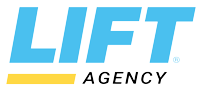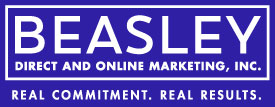Special Fall Pricing: Regularly $1,100 is now 50% off—$550. Enroll here.
Learn the latest ad tactics and AI tools to get better ROI
Why Take This Course Series?
This three-module workshop series covers how to place and manage Google Ads. When you place your ad at the top of Google, your ad appears in front of those actively searching.
We’ll dig deep into the Google Ads engine, and you’ll see how the bidding system works. Learn how to use lower bids and budgets to get better results than your competitors. Learn about Responsive Search Ads (RSA) and Performance Max (pMax) and how they work. The course includes tactics on using AI (ChatGPT, Bing Chat, Claude, etc.) to find keywords, create ad groups, and write ads.
We cover the four major parts of digital advertising with Google Ads:
- How to find keywords or themes, and how to save time using AI.
- How to create RSA and pMax campaigns and ads with AI.
- How to manage bids and budgets.
- How the Google bidding system works so you can bid lower, pay less, and rank higher.
The workshops are hands-on and practical, with many examples, tips, notes, and insights. You’ll see dozens of tactics to apply, including examples to copy, paste, edit, and use. You can do the work yourself or, by better understanding Google Ads strategies, manage staff, agencies, or consultants. Wherever possible, you’ll see how to use AI tools. You can also apply many ideas from Google Ads to other search engines and social media.
(Can’t attend the live workshop? No problem. These workshops are recorded, and we’ll send you the recording, workbook, and supplementary materials within a day of completion after we’ve had time to edit the recordings.)
Module 1: Google Ads Keywords and Themes.
Description:
This workshop examines how Google Ads uses accounts, campaigns, ad groups, keywords, themes, ad creative, and landing pages. We’ll show you how to save time using AI to define your campaign. Add your company, products and services, and business goals to the AI, so it knows who you are and what you want. Next, use AI to discover more about your target audience, including groups you may not have considered. Work with the AI to learn more about each target audience: what motivates them (desires and fears), the unique sales points (USP) and unique value points (UVPs) of your products and services, and the call-to-action (CTA). Each of these is tailored to your target audience. Use these to build ad campaigns and write ads that speak to your audience.
We also cover how to find keywords. When you’ve collected thousands of keywords, you clean them up. If you need to, we’ll show you how to use additional tools to translate your keywords into sixty languages. You can use AI to categorize keywords, find key ideas, and sort them by competition, intent, seasonality, and more. You’ll also see how to test thousands of keywords to find the ones that get impressions and clicks.
Key Takeaways:
- We’ll cover how a Google Ads account is structured, its limits, and how to get around those limits.
- You’ll see eight ways to find the keywords (and your competitors’ keywords) that your target audience uses and how to save time using AI.
- We’ll show you several simple spreadsheet tips for changing keywords into lowercase or translating them into sixty-six languages (or more). Another tool creates permutations of your top keywords.
- We’ll see how to test keywords to find the best ones.
- This course also covers themes, a new kind of keyword at Google.
- Are the keyword projections for traffic and bids real or fake data? What can you use from that data?
- How to sort keywords into categories for your buying cycle or purchase funnel phases.
- Finally, we’ll do a walk-through of a Google Ads account.
Module 2: Creating and Managing Ads, Plus pMAX, RSA, and New AI Tricks.
Description:
In this workshop, you’ll see the match modes (including how to find and block negative keywords) and remove duplicate keywords. We also cover how keywords, ads, and landing pages work together in Google Ads. This is illustrated with examples of ads and landing pages.
We look at the types of ads, including the new Responsive Search Ads (RSA) and Performance Max (pMax) ads, and how they work.
Our section on pMax covers what it is, examples of results, how to set it up, and how to adjust the settings. You’ll also learn cool tricks with dynamic insertion that let you set up countdown clocks (“Offer ends in 4 days, 6 hours, 22 minutes!”), or the city (“Available in Dallas”) in your ads. Other code lets you give special offers to mobile users or returning visitors. You get the code and examples to copy, paste, and edit to make your ads.
Finally, we look at A/B Split Testing. You’ll see how to do this without any special software. You’ll also see how to tell which ad is statistically better. And much more…
Key Takeaways:
In this class, you’ll learn:
- The keyword match modes, including negative keywords, how they differ, and how to use them.
- How to easily add tens of thousands of keywords to your account.
- How keywords, ads, and landing pages work together in Google Ads, with examples of text ads, image ads, and the landing page.
- You’ll see where your ads appear in the Google search engine, on Google sites such as Gmail, Maps, and so on, plus the several million sites in the Google Ads distribution network.
- We cover the types of ads in Google Ads, including Responsive Search Ads (RSAs) and Dynamic Search Ads (DSAs), with examples of actual data.
- We also cover pMax (Performance Max) campaigns. Based on our experience with pMax, we look at what it is, how to set up pMax, set target URLs, target locations, and themes. Lots of details, tips, and ideas on how to improve pMax campaigns. Google has hidden settings in pMax; you’ll see where to find them and how to change them.
- See how to use AI to write the text for pMax.
- pMax doesn’t use keywords. It uses themes. You’ll also see how to use AI to find themes for pMax.
- Google has several hidden settings in pMax. If these aren’t changed, your budget will be depleted. You’ll see how to find these settings and change them.
- How to optimize RSA ads and save time using new AI tips and tricks.
- How to use dynamic insertion in your ads so your visitors’ keywords are inserted into your ad and live countdown clocks (such as “Offer ends in 4 days, 6 hours, 22 minutes!”). You can show offers to different audiences. For example, new visitors see a 10% offer, and returning visitors see a 30% offer. You can also insert an image from your landing page into your text ad, such as photos of your products, your company logo, and so on, to get more clicks.
- You can use dynamic insertion for mobile ads, so desktop visitors see one offer while mobile visitors see another offer, such as “Free shipping for mobile orders!”
- Responsive Display Ads (RDAs) let you create ads that self-adjust to any device’s screen size.
- We also show a trick so you can fill the entire mobile screen, so your ad is the only thing your visitors see.
- You can use A/B Split Tests to test ads and develop the best ad (with examples and data). You can use A/B split tests without any special tools. A simple method in statistics lets you quickly pick out the best ads. Your team of interns will be able to write better ads than people with ten years of experience.
- And finally, we’ll show you how to use the app for Google Ads so you can manage ads on your phone when you’re away from the office.
Module 3: The Google Ads Bidding System and Quality Score.
Description:
In this workshop, we’ll dig into the Google Ads engine. You’ll see how the bidding system works. You can use lower bids and budgets to get better results than your competitors. We’ll also discuss how Google Ads uses Quality Score to set the ranking position of your ad and how much you’ll pay for the click (your cost-per-click). You’ll be able to increase your Quality Score, which lets you lower your bids yet rank higher. You’ll see how to optimize your Google Ads account for maximum results by managing bids to KPIs. The workshop also covers additional software from Google that lets you manage dozens of accounts in one account. Finally, we’ll show you how to manage Google Ads by time zones, continent, and language.
Key Takeaways:
In this class, you’ll learn:
- Google’s auction system and how the bidding algorithm works (with examples).
- Based on Google’s internal documents from the US Department of Justice vs Google antitrust trial, you’ll see the real bidding algorithm at Google and how it works.
- Google Ads Quality Score determines your final bid and ranking. You’ll see how to improve your Quality Score so you can use a lower budget and lower bids, yet your ads will show more often, rank higher, and cost less per click than your competitors (you can bid $0.25 and rank higher than a competitor who bids $5.)
- How to set bids, manage bids, and manage your budget.
- How to use portfolio theory for your ads.
- How to calculate KPIs (Key Performance Indicators). We’ll send you a KPI eBook.
- An example of a large account with 200,000 keywords where cost-per-click (CPC) fell from $0.76 to $0.07, clicks jumped up from 52 clicks per day to 17,650 clicks per day, and the click-through-rate (CTR) went from 0.12% to over 8%.
- We’ll look at a tool that lets you manage several Google Ads accounts. Another Google tool that lets you manage hundreds of thousands of keywords. These tools are available only by request from Google. We’ll show you how to get them.
- A series of slides covers how to manage global ad campaigns by time zone, continent, and language.
- Finally, if you’re a non-profit, how to use Google Foundation Grants as a test bed for your Google Ads campaigns.
How to Convince Your Boss Why You Should Take this Class:
You use digital ads to place your ads at the top of search engines. You can use ideas from Google Ads in ads for Microsoft Bing, Facebook, LinkedIn, and so on. Use ads to reach your audience to get more visits, leads, and sales.
Your internal teams know your goals, products, and services and can create and manage better advertising.
- Manage Digital Advertising: You’ll understand how to set up and run your advertising projects. If you manage staff, interns, agencies, or contractors, you’ll be able to tell them what to do and get results that matter.
- Cost-effective: This course will help you to carry out digital ad campaigns faster, at a lower cost, and with better results.
The Presentations:
- The workshops are hands-on and practical.
- In addition, the workshops are live so you can ask your questions.
- Can’t attend the live workshops? No problem! All workshops are recorded. If you have questions, you’re welcome to email the instructor.
Download Material:
- Video of the presentation with slides and audio.
- PDF of the complete presentation.
- Spreadsheet to collect and manage thousands of keywords.
- Spreadsheet tool to convert your keywords to lower case.
- Free software to make permutations of your keywords.
- Spreadsheet tool to translate your keywords into 66 languages.
- The KPI eBook by Andreas Ramos explains KPIs, including CPL (Cost-per-Lead), CPA (Cost-per-Action), BEP (the breakeven point), and more.
Who is the course for?
Marketing managers, digital marketing managers, search engine marketers, creative directors, agency account directors, and media planners in B2C and B2B companies, government, and non-profits who manage digital advertising (paid search).
The Presenter:
Andreas Ramos

Andreas Ramos teaches courses at the DMAnc.org in digital marketing with AI, SEO, digital advertising, Google Analytics 4.0, and LinkedIn profile optimization.
- Adjunct Professor teaching university-level AI-powered digital marketing at Omnes Education, CSTU.edu, and the DMAnc.org.
- Author of 22+ books on digital marketing, including five Amazon Best Sellers. Books published by McGraw-Hill, Tsinghua University Press, and others in five languages.
- Digital marketing since 1995. Former director of the digital agency at Acxiom, where he led digital marketing projects for global banks, airlines, hotels, and more. Director of Global SEO at Cisco, where he worked in 44 languages in 84 countries. He was CMO of a Silicon Valley startup and is currently an advisor to two AI startups. His current clients include Stanford and Harvard. He has worked with Cigna, ATT, Chase, Citibank Brazil, Bain, SUN, Brio Technology, Oracle, SGI, NTT, and smaller companies.
- Keynote speaker at conferences in NYC, Chicago, San Francisco, San Jose, Beijing, Shanghai, Copenhagen, Vienna, Karachi, Stanford, and other cities.
- Member of the association for people who work in SEO at Silicon Valley Fortune 500s. Noted Most Valuable Contributor (2014).
- In Palo Alto since 1992.
- Master’s degree from Universität Heidelberg, Germany.
- Website is https://andreas.com (online since 1994).
- Social media: LinkedIn https://linkedin.com/in/andreasramos/ and X (formerly Twitter) https://twitter.com/Andreas_Ramos.
- Contact Andreas at [email protected].
Workshop dates and times:
FALL
Module 1: Google Ads and Keywords.
Wednesday, Sep 18, 2024
from 12:00 p.m. to 2:00 p.m. PDT.
Module 2: Creating and Managing Ads.
Wednesday, Sep 25, 2024
from 12:00 p.m. to 2:00 p.m. PDT.
Module 3: The Google Ads Bidding System and Quality Score.
Wednesday, Oct 02, 2024
from 12:00 p.m. to 2:00 p.m. PDT.





